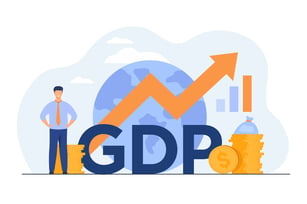Category Archives: For Big Investors


US equities rally even as bond yields and the dollar surgeNonfarm payroll employment surged by 303,000 in March, the most since May 2023, led by healthcare, government, leisure, and construction, the Labor Department’s Bureau of Labor Statistic...


Annual inflation remained above 2.0 percent, underscoring economic resilienceConsumer prices rose 0.3% in February from 0.4% the previous month, and at an annual pace of 2.5% from 2.4% in January as consumer spending rebounded to 13-month highs, the ...


Equities rally while the US dollar and bond yields fall The US Federal Reserve maintained interest rates at multi-decade highs of 5.25%-5.50% following its two-day monetary policy meeting on Wednesday, even as Chair Jerome Powell reiterated that...


However, the mixed data showed an increase in the jobless rate and a drop in wage growth The US economy added 275,000 new jobs in February, above the 12-month average of 230,000 and way higher than economists' forecasts of 198,000. The month...


Sales weighed by cold weather and seasonal adjustments; expected to rebound next month Sales at US retailers shrank 0.8% month-on-month in January, marking the lowest reading in 10 months, primarily weighed down by a drop in receipts at gasoline...


Equities plunge, bond yields and the greenback rise as rate cut hopes fade The consumer price index in the US, a measure of prices paid by urban consumers for a basket of goods and services, rose 0.3% month-on-month in January, unchanged from th...


Property prices rise from a resilient labor market, pullback in inflation, and mortgage ratesThe UK housing market registered its fourth consecutive monthly price increase in January amid falling mortgage rates, cooling inflation, and a resilient lab...


December figures revised higher; unemployment rate unchanged for the third straight month Nonfarm payroll employment accelerated in January, signaling the continued resilience of the labor market, which will likely shield the US economy from a r...


Personal consumption expenditures (PCE) rose 0.2% in December from -0.1% the previous month, while they were unchanged at 2.6% annually. Food prices increased by 0.1% and energy by 0.3%, the Commerce Department's Bureau of Economic Analysis (BEA)...


Gross domestic product slowed from the previous three months but rose more than expectedUS economic growth advanced at an annual pace of 3.3% in the fourth quarter of 2023, the US Commerce Department's Bureau of Economic Analysis' advance rep...

 RoboForex
RoboForex Exness
Exness FxPro
FxPro Alfa-Forex
Alfa-Forex Libertex
Libertex FxGlory
FxGlory XM
XM IC Markets
IC Markets Forex.com
Forex.com AXITrader
AXITrader